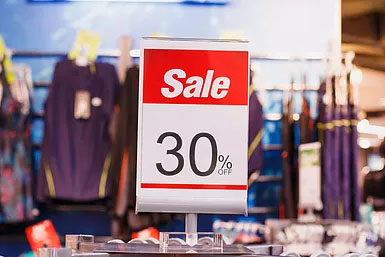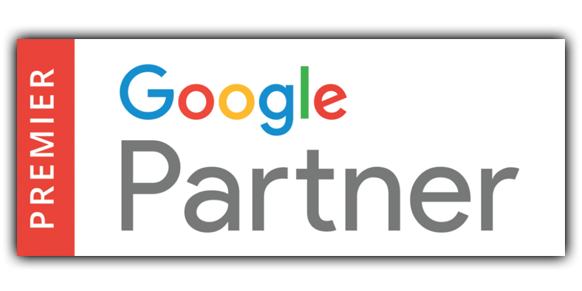I Have to Discount Because My Dealership is Different!

Back in the late 90’s ATV’s were selling like hot cakes. Two of our family-owned Honda stores were located on the outskirts of Atlanta, just a couple hour drive across the state line to two of the biggest discounters in the nation. And with no sales tax being collected, stacked on top of the low ball price, matching their prices were only do-able if we liked to dip into hold back, or lose money all together. My sales people and sales managers had me convinced that every single customer who came through the doors had a Cycle Trader magazine and price shopped us against the discounters.
Like so many dealers, I took the bait. Hook, line and sinker. We had to become a discounter to be competitive, because of our location and our products. “Our dealership was different.”
And I’m ashamed to say, we starting advertising low-ball prices. And even though we weren’t holding any gross profit, we were going to make it up in volume. We wouldn’t ever turn down a deal, and we’d match any price.
Sure, we rolled some units that year, but cash flow was tighter than Dick’s hat band. I hated to see the floor checker show up, and yearned for the hold back check each quarter. It was no way to live.
I was young, dumb, and inexperienced, and didn’t understand that business is a game of margin, not volume. I know, this isn’t what the ‘Everyday Joe’ believes, nor is it what your college professor taught you in Econ 101. But, they are wrong! Which is why they aren’t running successful businesses.
Many people don’t realize that there are roughly 800,000 new businesses started each year in the United States. Half of those will fail in the first year. And of the balance, another half of those will fail in year two.
But the failures aren’t just small Ma-and-Pa businesses. There are plenty of big, corporate, fancy CEO’s that sincerely believe, albeit ignorantly, that growing market share and increasing volume are the secrets to their success.
In 2001 there were a record number of big dumb company bankruptcies with over 250 major organizations that filed for bankruptcy alone that year. Between 2000 and 2004, 23 of the 40 biggest bankruptcies of all time occurred. Many, if not most, of these companies like K-Mart and The Flemings company (who owned Piggly Wiggly and IGA grocery stores and were doing 15.6 billion in revenue) focused on being the low price leader.
Consider this: When was the last time you saw a business having a “Going out of Business” price increase?
The reality is, when most businesses get in trouble, the first thing they do is resort to discounting with the mind set of, “We’ll make it up in volume.”
An industry that is a great case study in discounting is the Airlines. Back in 78 when President Carter deregulated the industry, which meant the airlines were free to charge whatever they wanted, not one raised its prices. Instead they began a fierce discounting race to the bottom which resulted in dozens of Airline bankruptcy filings. And not just the small airliners, but the big boys like Eastern, Continental (twice), US Airways, Piedmont, Pan Am and even Delta, who’s pilot concessions allowed them to narrowly avoid demise.
Ever hear the story of the two illustrious entrepreneurs from Texas who sold watermelons? They owned a pick up truck and heard they could drive down to Mexico and buy the melons for a buck a piece. So to sell in volume they decided they would bundle them at wholesale for $10.00 a dozen. They sold out before they even made it all the way back to San Antonio. Sitting on the side of the road and counting their money they realized the were a little short on cash. The one entrepreneurs looks to the other and says, “You thinking what I’m thinking?” “Yep. We’re gonna need a bigger truck!”
Owen Young of GE once said, “It’s not the crook we fear in modern business; rather the honest guy who doesn’t know what he’s doing.”
Here’s something to consider. If everyone buys soley on price why would anyone buy a Cadillac Escalade for an extra 20 grand over a Chevrolet Tahoe?
Why buy a Ruth’s Chris steak for $50 bucks over a $10 dollar special from Outback.
The truth is, only about 10% of consumers make their buying decisions soley based on price. I know what your sales manager has convinced you of, “But my dealership is different.” DON’T BELIEVE IT!
Here’s another stat you’ve likely never heard. No less than 5%, to as high as 20%, of consumers are suspicious of the lowest price and prefer a better or premium option. This is especially true with the more affluent buyer.
The following year, with the help of a 20 group, reading books, and the negative cash flow experiences of discounting, we totally changed our marketing and sales process.
We no longer advertised about price, we promoted events at our dealerships, and we put a deal desking system in place where we presented full price every time regardless of circumstance, and trained our staff to build value in more than just the product, but our staff and service, before, during and after the sale. Our volume dropped from 1,000 units to about 850 and our bottom line quadrupled. And those 150 hardcore shoppers that we didn’t do deals with weren’t missed, they got to be someone else’s headache.
And this is why to this day we do not recommend or promote discount advertising. There is a much better way. Our Sharp Shooter Predictable Growth System is a pro-active and calculated system designed to grow new customers and increase the value of your existing customers without ever mentioning price or a discount. And it works!
For more information contact us today at 877-242-4472 or shoot us a message at marketing@powersportsmarketing.com.

